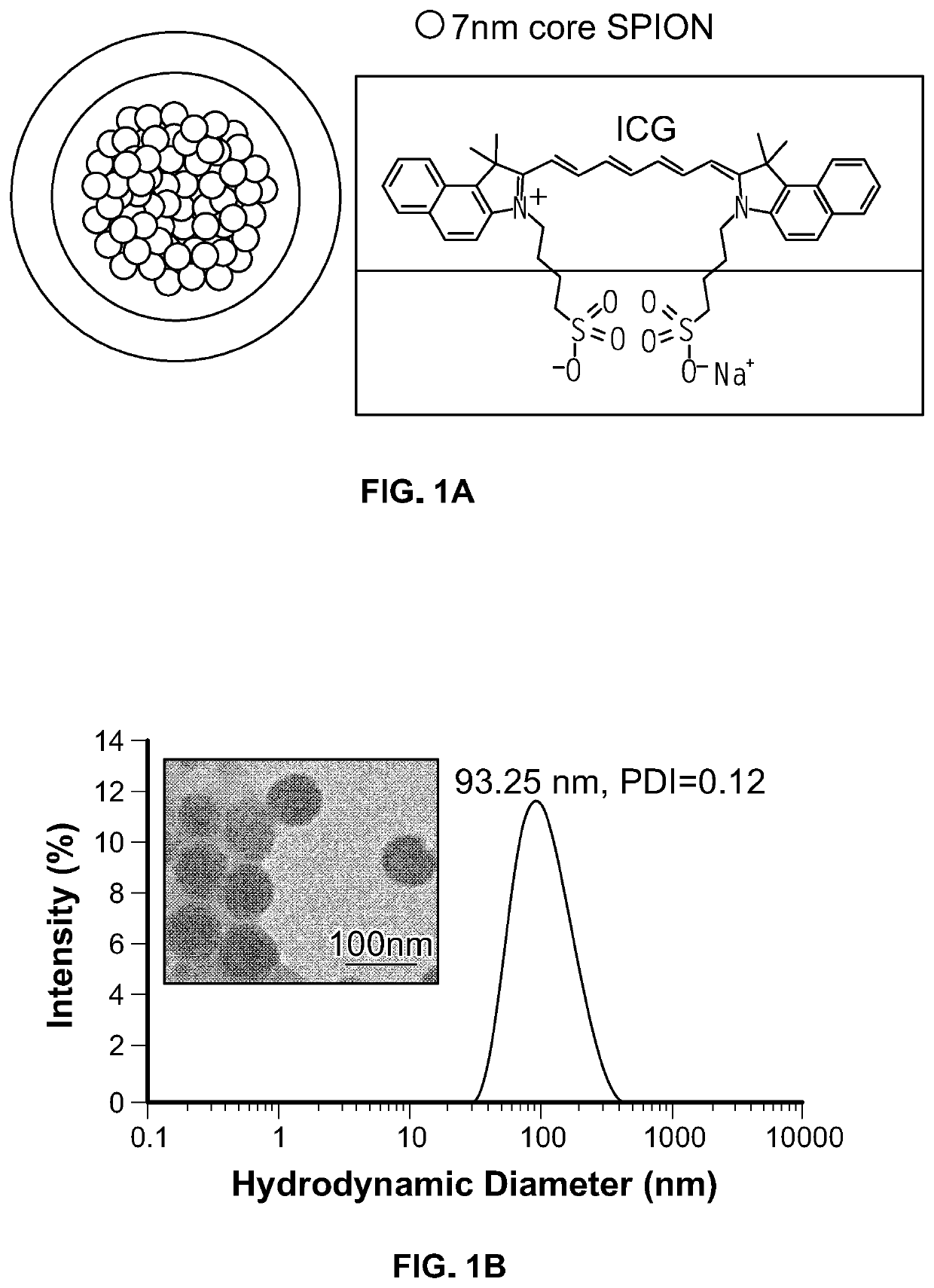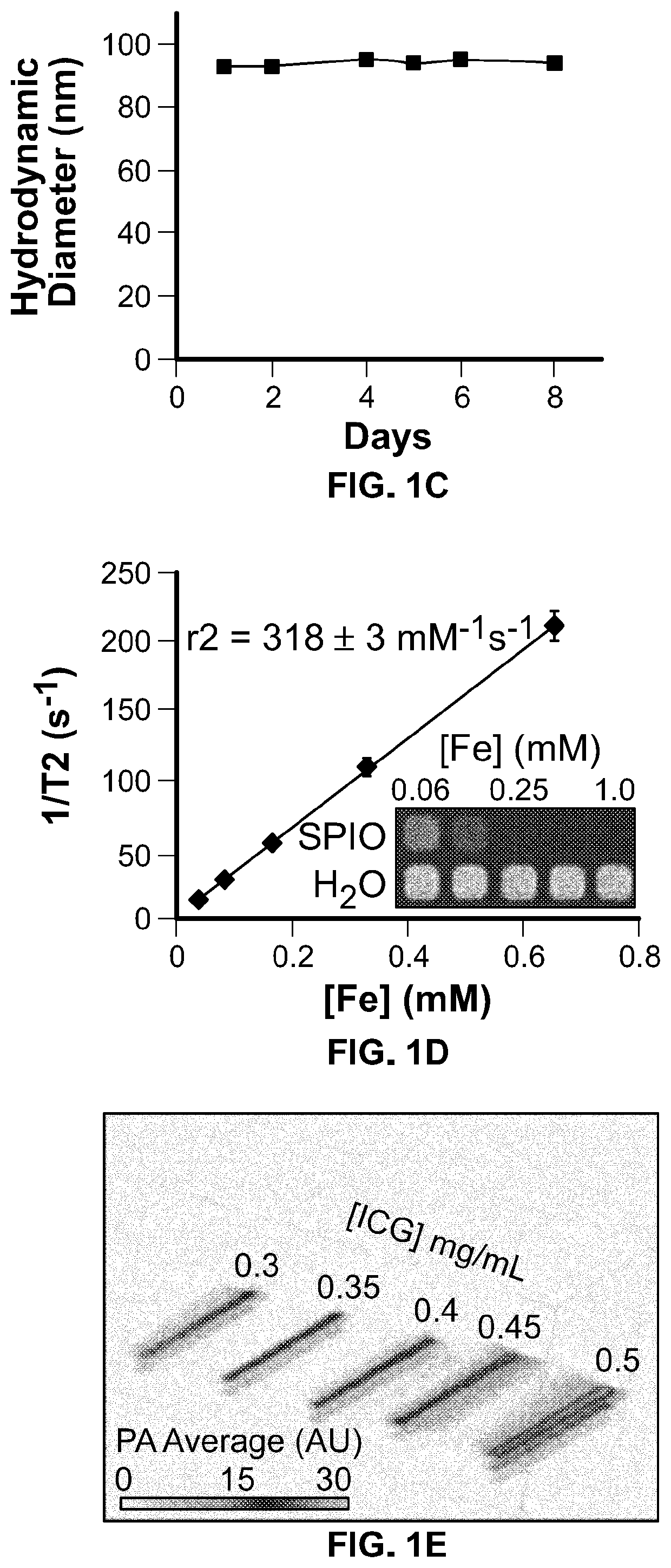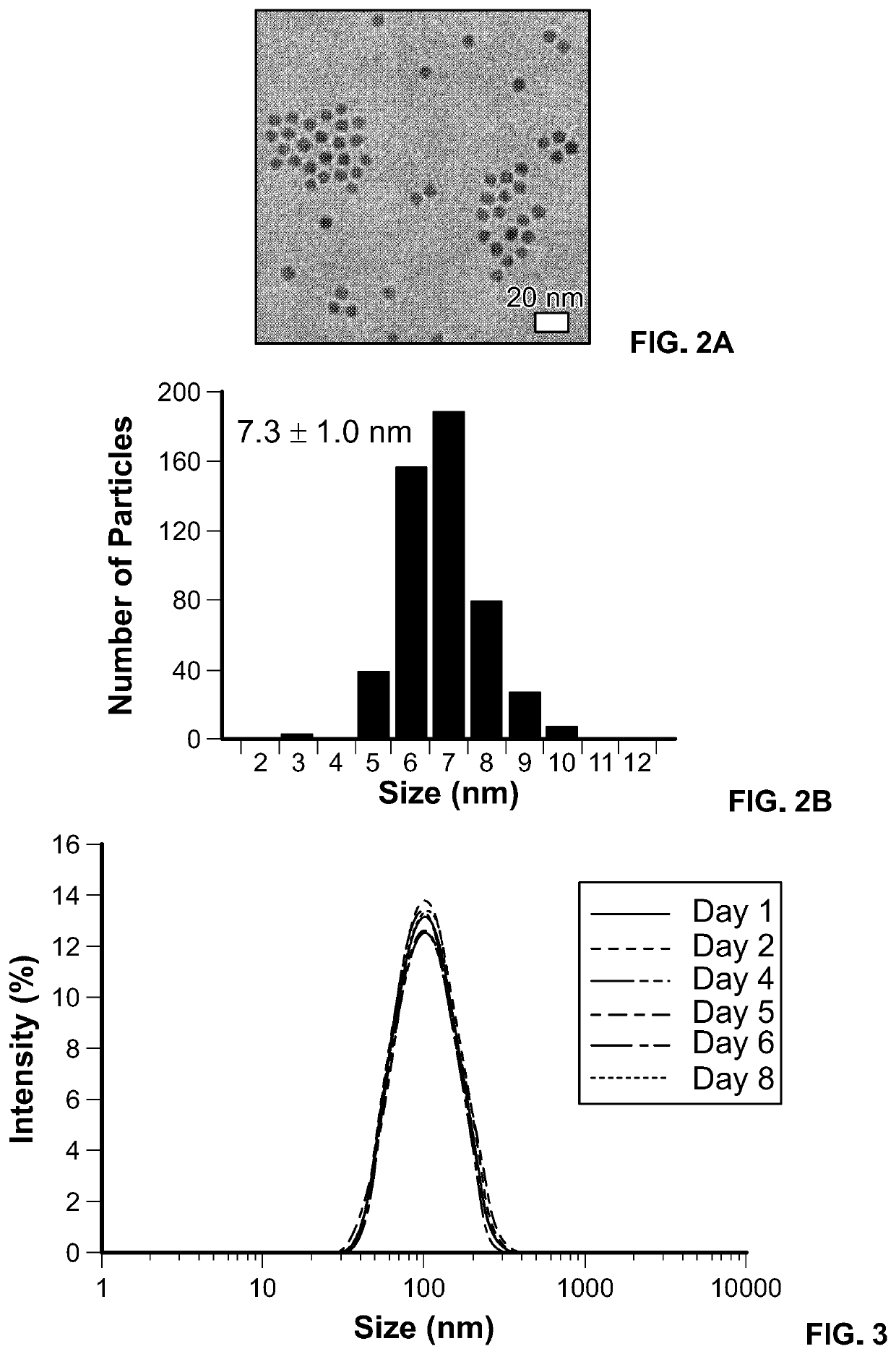Amphiphilic dye-coated inorganic nanoparticle clusters
a nanoparticle cluster and amphiphilic dye technology, applied in the field of amphiphilic dye coating inorganic nanoparticles or hydrophobic polymers, can solve the problems of inadequate sensitivity, lack of improvement in overall survival, difficult to achieve complete tumor resection, etc., and achieve the effect of enhancing the effect of radiation therapy and increasing the amount of radiation absorbed
- Summary
- Abstract
- Description
- Claims
- Application Information
AI Technical Summary
Benefits of technology
Problems solved by technology
Method used
Image
Examples
example 1
ICG and / or PpIX Coated SPIO Nanoclusters for Treating Cancer
Materials and Methods:
[0166]Superparamagnetic Iron Oxide (SPIO) Synthesis:
[0167]SPIO nanoparticles were prepared by thermal decomposition. Iron(III) acetylacetonate [Fe(acac)3], 1,2-hexadecanediol, oleic acid, and oleylamine and benzyl ether were stirred under nitrogen. The mixture was heated to 200° C. for 15 min, and then under a blanket of nitrogen, heated to reflux (300° C.) for 1 h. After allowing the reaction to cool to room temperature, two volumes of ethanol were added and the resulting mixture was centrifuged (5500 g×15 min) to precipitate the nanoparticles. The particles were then allowed to air dry and dissolved in toluene. Large aggregates were removed by centrifugation at 3000 g×15 min
[0168]ICG SPIO Nanocluster Synthesis:
[0169]A mixture (200 μL) containing indocyanine green (ICG) (2 mg into dimethylformamide) and SPIO (1.1, 2.2, 4.4, 6.6, and 8.8 mg based on the Fe concentration in toluene) was pipetted into a ...
example 2
Photoacoustic-Guided Surgery with Indocyanine Green-Coated Superparamagnetic Iron Oxide Nanoparticle Clusters
[0180]A common cause of local tumor recurrence in brain tumor surgery results from incomplete surgical resection. Adjunctive technologies meant to facilitate gross total resection have had limited efficacy. Contrast agents used to delineate tumors pre-operatively cannot be easily or accurately used in a real-time operative setting. Although multimodal imaging contrast agents have been developed to help the surgeon discern tumor from normal tissue in the operating room, these contrast agents are not readily translatable. The inventors of this application have developed a contrast agent comprised solely of two FDA-approved components, indocyanine green (ICG) and superparamagnetic iron oxide (SPIO) nanoparticles-with no additional amphiphiles or carrier-materials, to allow pre-operative detection by MRI and intraoperative photoacoustic (PA) imaging. The encapsulation efficiency ...
example 3
Image-Guided Resection and Local Treatment of Glioblastoma
Synthesizing and Characterizing the Physical-Chemical Properties of IPS Nanoclusters
[0216]Preparation of IPS nanoclusters: 7 nm SPIONs can be synthesized by thermal decomposition as known in the art. To prepare IPS nanoclusters, SPIONs (in toluene) ICG (in DMSO) and either PpIX or chlorin e6 (in DMSO) can be mixed at varying ratios, so that a formulation with well-aligned imaging and therapeutic capabilities can be identified. The SPION, ICG, photosensitizer mixture can be added to water and sonicated. The sample can be left open to air overnight, allowing for the slow evaporation of toluene and formation of stable nanoclusters. IPS nanoclusters can be further purified by dialysis or diafiltration. We have previously performed magnetic purification (Miltenyi Biotec) as part of the purification procedure, but found it to be unnecessary. Preliminary studies have revealed that IPS nanoclusters can easily be prepared with both Pp...
PUM
| Property | Measurement | Unit |
|---|---|---|
| size | aaaaa | aaaaa |
| depth penetration | aaaaa | aaaaa |
| depth | aaaaa | aaaaa |
Abstract
Description
Claims
Application Information
 Login to View More
Login to View More - R&D
- Intellectual Property
- Life Sciences
- Materials
- Tech Scout
- Unparalleled Data Quality
- Higher Quality Content
- 60% Fewer Hallucinations
Browse by: Latest US Patents, China's latest patents, Technical Efficacy Thesaurus, Application Domain, Technology Topic, Popular Technical Reports.
© 2025 PatSnap. All rights reserved.Legal|Privacy policy|Modern Slavery Act Transparency Statement|Sitemap|About US| Contact US: help@patsnap.com



